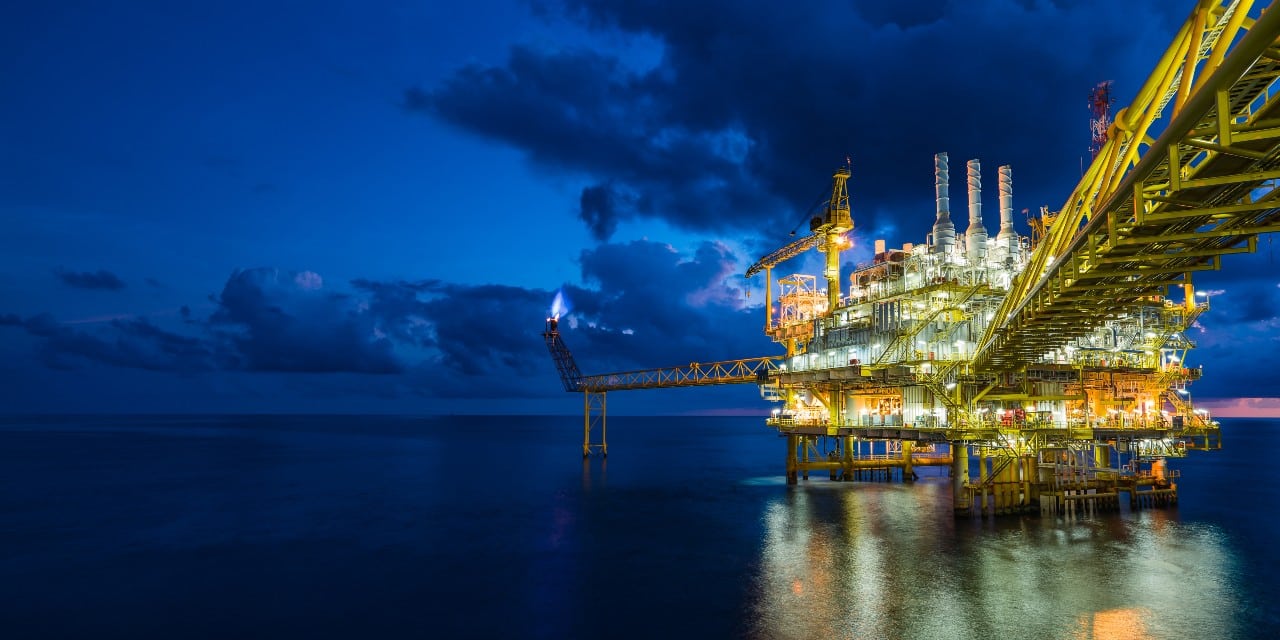The target to limit global heating to 1.5°C by 2050, accepted by all major countries in the Paris Agreement, could be missed because of the carbon impact of just 100 companies in the oil and gas sector.
A new comprehensive study from the World Benchmarking Alliance (WBA), alongside partners CDP and ADEME, shows that, without immediate and decisive action, the sector would be responsible for overall failure to hit the target.
This is the first time the industry has been judged against a 1.5°C scenario and it is the first study to assess oil and gas companies using the International Energy Agency’s (IEA) Net Zero Emissions by 2050 scenario.
The groundbreaking report shows that, based on current rates of production, these companies are set to consume the sector’s allocated carbon budget from 2019 to 2050 by 2037, some 13 years too early. Despite this trajectory, researchers found that none of the 100 oil and gas companies assessed have committed to stopping exploration.
Oil and gas companies find themselves at a crossroads – transform or become redundant
State owned companies emerge as the ones that hold significant influence, but are seriously dragging their heels in taking corrective action and eating into the IEA’s remaining overall carbon budget for all sectors. Oil and gas extracted by the 100 companies is set to use up nearly 80 per cent of the remaining carbon dioxide budget for all sectors and all human activities. State-owned companies will take up half the remaining carbon budget (54 per cent). The seven oil majors – BP, Chevron, ConocoPhillips, Eni, ExxonMobil, Shell and Total Energies – account for a further 13 per cent, and independent companies 12 per cent.
When looking at the overall impact of companies, there are three types of emissions classified by the Greenhouse Gas Protocol Corporate Standard. Scope 1 emissions are direct emissions from sources owned or controlled directly by the company. Scope 2 emissions are indirect emissions created by the generation of energy that the company buys. Scope 3 emissions are all further indirect emissions that occur in the value chain of the reporting company.
These emissions are particularly vast for petrochemical companies. For example, ExxonMobil’s scope 3 emissions in 2019 were greater than Canada’s. In the same year, Saudi Aramco’s scope 1, 2 and 3 emissions were greater than Germany, France, Italy and Spain’s combined emissions.
It is said that you can only control what you measure; by that token the oil and gas sector are not likely to find fast fixes – only one third of the 100 largest oil and gas companies actually measure their Scope 3 emissions, according to the World Benchmarking Alliance.

Just 12 of the companies studied publish information on low-carbon capital expenditure investment plans to 2024. Picture from iStockphoto.
Research and development is another area of concern highlighted in the report, despite many referencing “new technologies” as the future of the industry in their transition plans. While more than half of the companies disclose expenditure on research and development, only 17 report information on the proportion of investment dedicated to low-carbon technologies in 2019. Worryingly, just 12 publish information on low-carbon capital expenditure investment plans to 2024 and these planned investments remain too low to enable a shift to a low-carbon world.
Vicky Sins, Lead Decarbonisation and Energy Transformation at WBA, comments: “Every company, policy maker and investor is aware of the urgent need to prioritise decarbonisation and energy transformation, but awareness has not led to sufficient action. In a world powered by a new era for energy production, oil and gas companies find themselves at a crossroads – transform or become redundant. They can no longer plead ignorance of how urgently change is needed. The industry must acknowledge the wholesale transformation required to survive and signal the steps it is taking to meet this challenge.”
The full Oil and Gas Benchmark, insights report and individual company scorecards are publicly available on WBA’s website. All companies assessed in the benchmark are part of WBA’s SDG2000, a list of the 2000 most influential companies towards achieving the Sustainable Development Goals (SDGs).
Subscribe
Sign-up to receive our newsletter
Top and bottom performing companies
The benchmarking ratings for each of the 100 companies are calculated from the ACT Oil and Gas sector methodology, with a highest possible rating of 20A+.
They show company climate performance across three dimensions:
- A performance score ranging from 0 to 20, which shows transition alignment measured with a range of quantitative and qualitative KPIs.
- A narrative score from E to A: a rating based on cross-comparison of the KPI data and public information summarising the company’s overall strategic position
- A Trend score of +, – or = which summarises future outlook. Are the companies likely to perform better, worse or the same in future.
The Top 10 – notably all European companies – are:
- Neste (score: 8.1B=)
- Engie (score: 7.9B=)
- Naturgy Energy (score: 6.8C+)
- Eni (score: 7.3C=)
- BP (score: 6.0C+)
- Total (score: 6.1C=)
- Repsol (score: 5.0C=)
- Equinor (score: 4.9C=)
- Galp Energia (score: 4.3C=)
- Royal Dutch Shell (score: 3.4C=)
The Bottom 10, all of which are rated extremely poorly and are expected to get even worse, are:
100. PBF Energy (score: 0.0E-)
99. Basra Oil Company (score: 0.1E-)
98. NGL Energy Partners (score: 0.1E-)
97. National Oil Company of Libya (score: 0.3E-)
96. Abu Dhabi National Oil Company (score: 0.3E-)
95. Shaanxi Yanchang Petroleum Group (score: 0.4E-)
94. Turkiye Petrol Rafinerileri (score: 0.4E-)
93. Sinochem Energy (score: 0.4E-)
92. Enterprise Products Partners LP (score: 0.4E-)
91. EP Petroecuador (score: 0.4E-)





